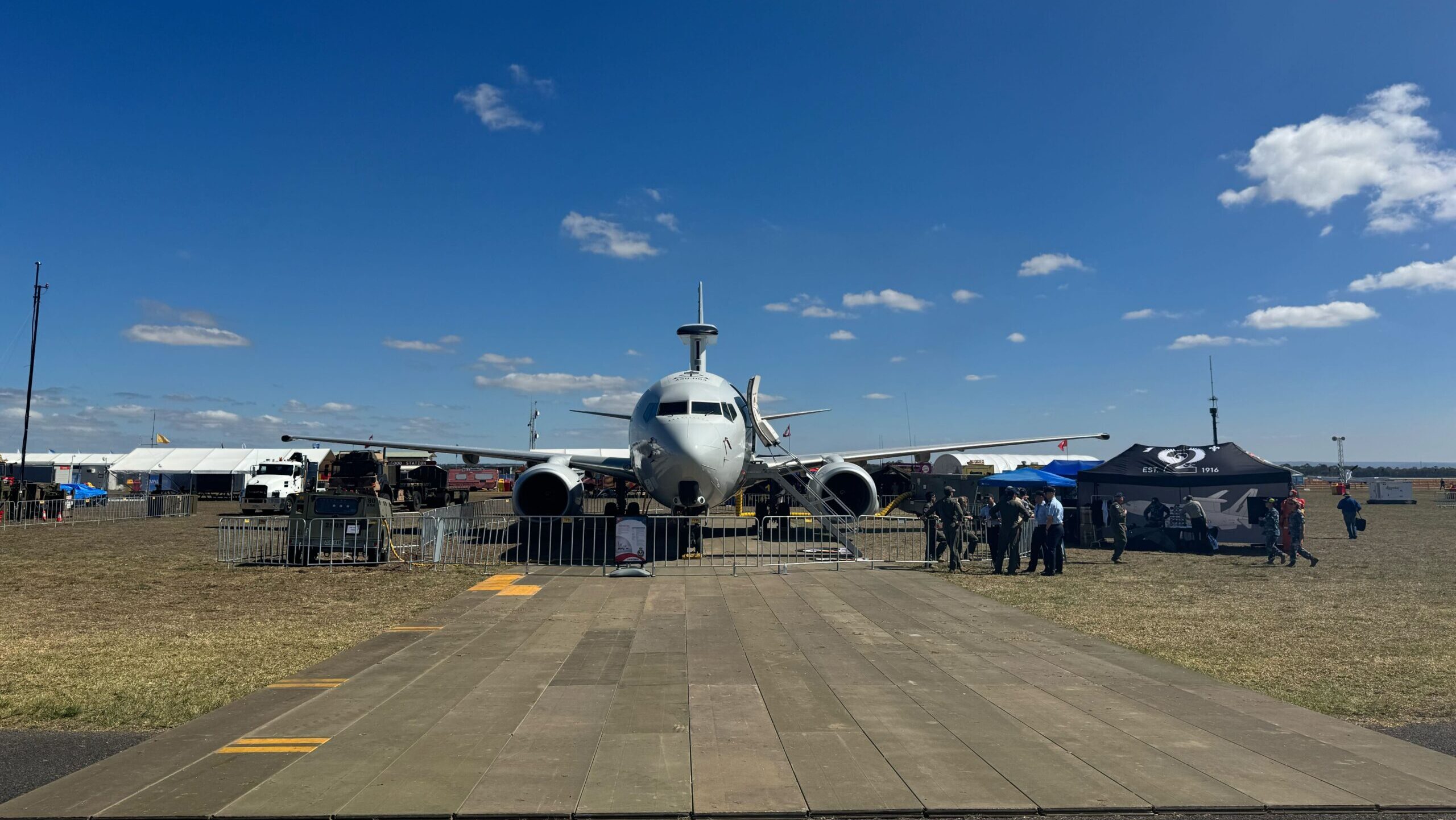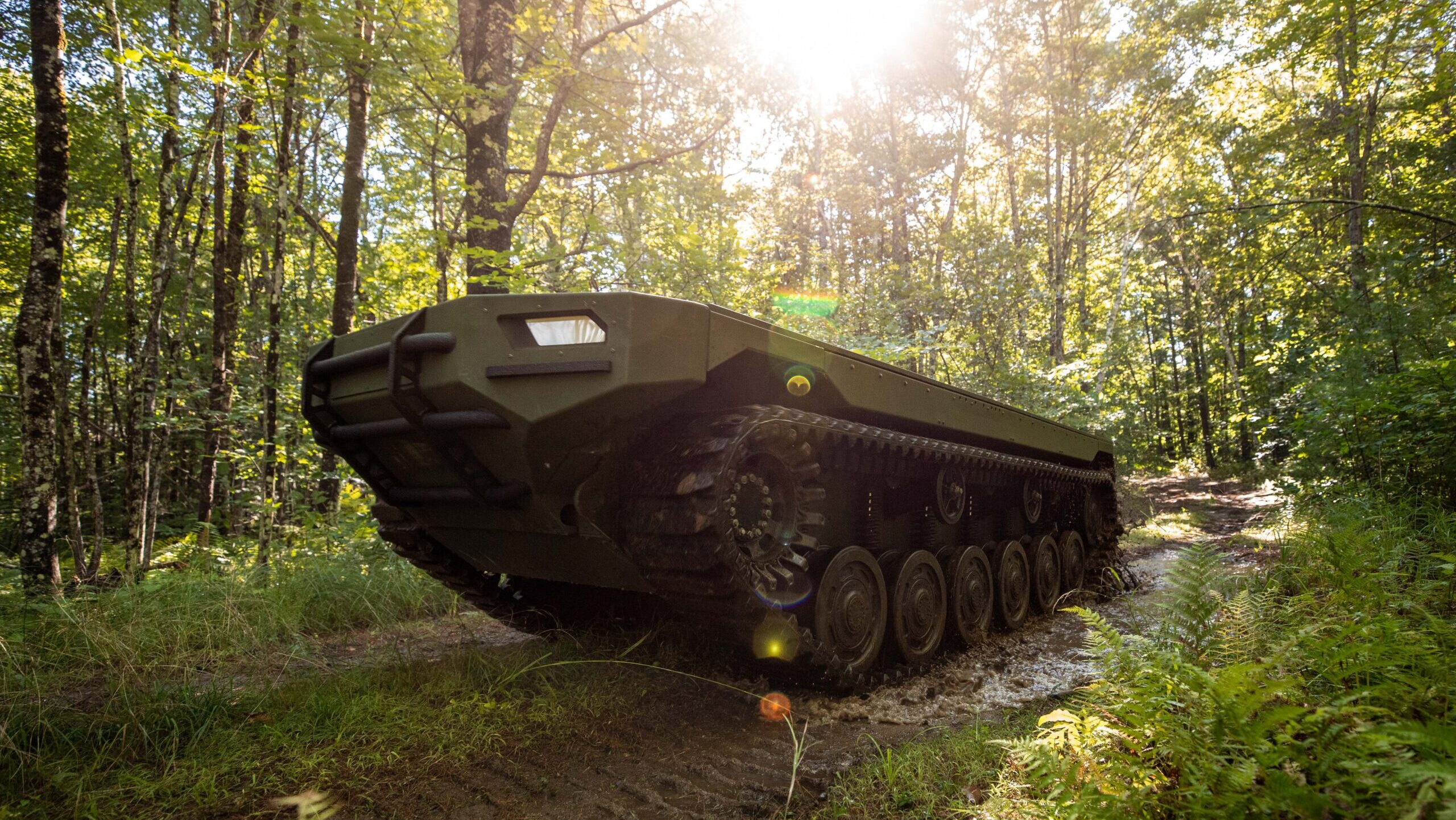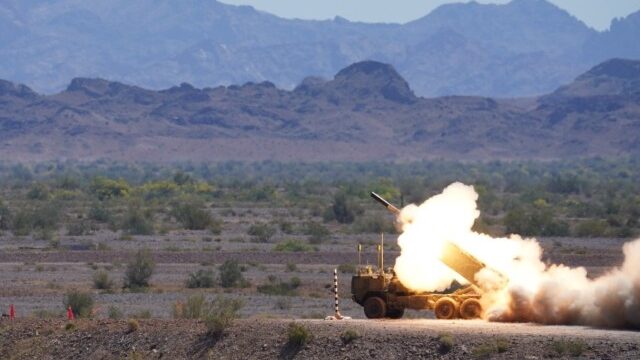Air Force eyes ‘Advanced E-7’ Wedgetail with upgrades including new radar
A request for information released by the service raises the possibility of integrating new upgrades on a platform “equivalent” to the E-7, though it’s not clear what that could be.


A static display of the Royal Australian Air Force’s E-7 Wedgetail, recognizable for its distinctive “top hat” radar. (Michael Marrow/Breaking Defense)
WASHINGTON — The US Air Force may not have its first E-7A Wedgetail yet, but the service is already exploring upgrades for its future fleet, including the potential for a new radar, according to a notice.
An April 15 request for information (RFI) released to industry says that the Air Force, in moving to quickly field two rapid prototype surveillance planes, “intentionally” left out certain “emerging capabilities” for those early jets. Accordingly, the service is seeking to develop new technologies as part of an engineering and manufacturing development (EMD) phase planned to launch in fiscal 2027, which could feature anything from a new radar — replacing Northrop Grumman’s distinctive “top hat” sensor — to better protection against electronic warfare and an enhanced communication suite for future aircraft.
A new approach for what the service in the RFI calls an “Advanced E-7” could point to an evolving acquisition strategy. Previously, the service stated that officials planned to make a production decision, known as milestone C, in FY26, but an EMD phase — typically signified by a milestone B decision — is now expected to kick off in FY27.
The April 15 RFI also raises questions about what the future Wedgetail fleet could look like if an “Advanced E-7” is pursued. Following the EMD phase, which the document says will require the delivery of two “advanced” planes within seven years, the Air Force will then consider whether to retrofit existing aircraft, build fresh jets with the new capabilities included, or pursue some mix of the two. New capabilities could also be integrated on a platform “equivalent” to the Wedgetail, the RFI says, pointing to a future possibility that the service fields a different aircraft for the E-7’s missions entirely.
“The Department of the Air Force (DAF) routinely requests information from industry to better understand what current technologies exist and to assist in building future requirements to ensure the DAF maintains technological advantage over current and future adversaries. The DAF has not yet made a decision to fund advanced capabilities for the E-7 as detailed in the RFI,” an Air Force spokesperson said in a statement to Breaking Defense when asked about the document.
“The DAF is focused on delivering the E-7A Rapid Prototyping aircraft and is preparing to procure a fleet of E-7A aircraft to meet warfighter airborne Battle Management Command and Control and Air Moving Target Indicator requirements,” the spokesperson added. Additional information on the program’s acquisition strategy and other topics raised in the RFI was not immediately available.
The Wedgetail, already flown by US allies like Australia, is the slated successor to the aging E-3 Sentry. A militarized version of Boeing’s 737 Next Generation commercial airliner, the jet will be the Air Force’s new eye in the sky, with primary tasks being the tracking of airborne targets and performing battlefield command and control functions.
A price dispute between officials and prime contractor Boeing for the E-7A dragged out negotiations, which concluded in a $2.6 billion deal for the two rapid prototype planes last year. Officials said at the time that the two planes, known as “operationally representative” prototypes, would be delivered in FY28, which would form part of a program of record expected to consist of 26 Wedgetails.
Any “baseline documentation” for the Wedgetail will not be available until the third quarter of FY28, “or potentially later,” the April 15 notice says. Only industry partners with highly sensitive special access program/special access required clearances and “appropriate network connectivity” will be positioned to meet an FY27 target to launch the EMD phase, the RFI adds, which asks for initial responses by April 22.
Valerie Insinna contributed to this report.










































































































































































